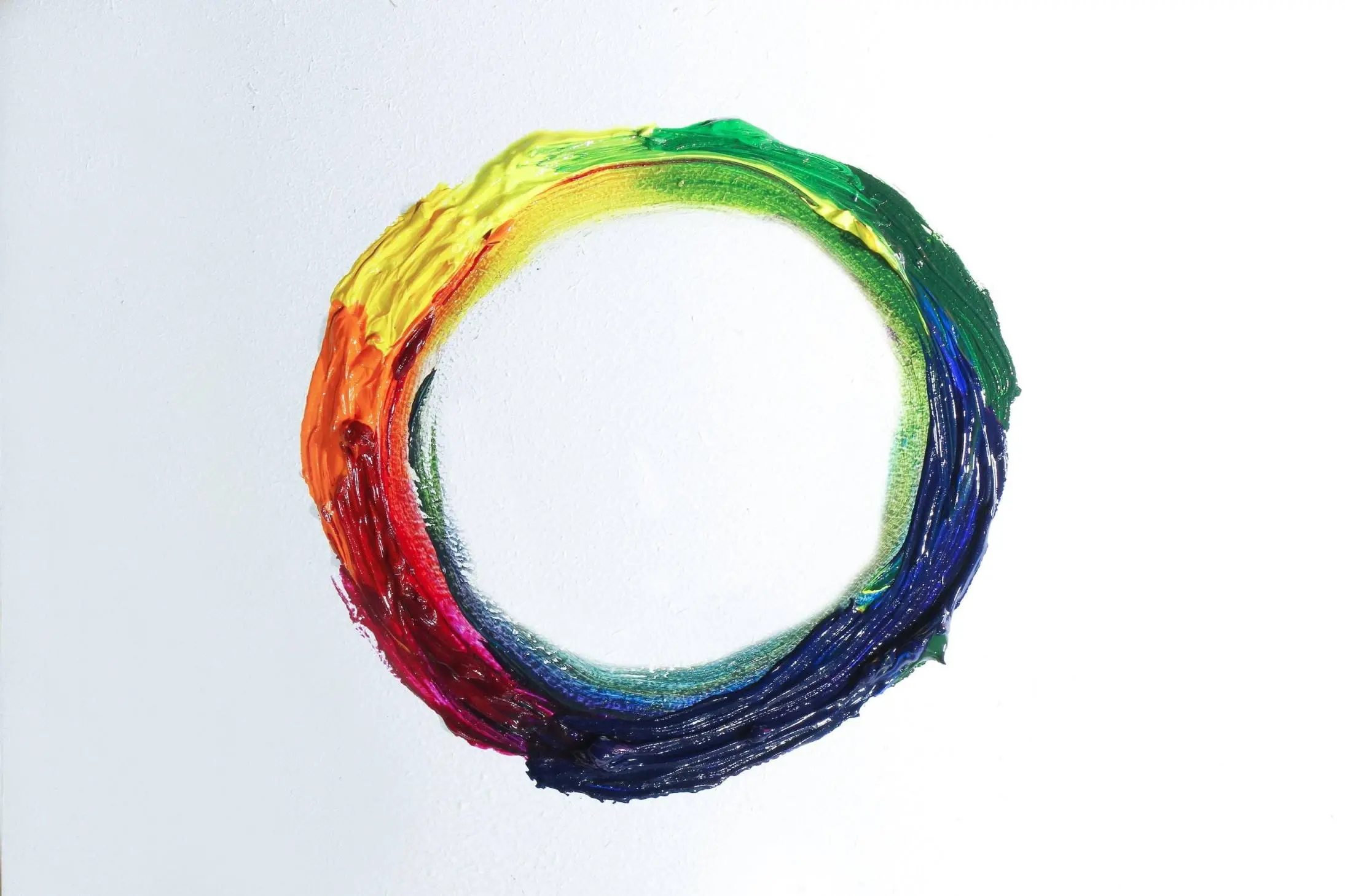Every color choice for the website design has an impact on the success of the website. Colors tell visitors if they’re on the right website, help set their mood, and can even spark sales or conversions. The practice of using colors in this way is known as color theory. Color theory is used in every field. For website design, color theory uses color psychology to determine the best colors to use for any genre. In this post, we’ll examine color theory for website design to help you get the most out of your website.
How Color Theory Works
I’m sure you’ve noticed that certain color schemes are used for restaurants, banks, funeral homes, etc. Those same types of businesses avoid certain colors. There is a good reason for this. Colors and color combinations spark feelings and emotions. Certain colors give the feeling of edgy and adventurous, while others give the feeling of safety. They also spark feelings of culture and perception.
Marketers and designers can use those feelings and emotions to their advantage. The practice of understanding how colors affect emotions, and how to use this to your advantage, is known as color theory.
Color theory is a set of rules and guidelines that helps specify which colors and combinations spark which emotions. This works for any topic and the rules and guidelines are the same. Learning color theory provides website designers with a set of guidelines to follow. Following color theory guidelines will make your designs more effective.
Colors inform the visitor that certain elements are where they should focus their attention, should click, read, etc. Colors can increase brand recognition and desirability. They improve the user experience and can help keep them on your site longer.
Color Theory Concepts and Building Color Palettes
The concepts for color theory will help build color palettes that work for your website. In this section, we’ll discuss the major concepts and see how they work. There are lots of tools to help with choosing colors and building color palettes.
We’ll use the free version of Adobe Color for our examples. I recommend using tools such as Adobe Color to create color palettes. You can adjust one color with a slider, or the drag-and-drop tool and Adobe Color automatically adjusts the other colors to find the best match. This takes the guesswork and difficult testing out of the equation and leaves you with colors that work well together. Adobe Color provides each color’s hex code, RBG code, HSB, and LAB, and each can be adjusted with sliders. You can save your colors to your library to reuse anytime.
Color Wheel
The color wheel shows the primary colors with their secondary and tertiary colors to show how the colors relate. You can use them in several combinations to create color palettes. We’ll discuss a few of the best types of combinations.
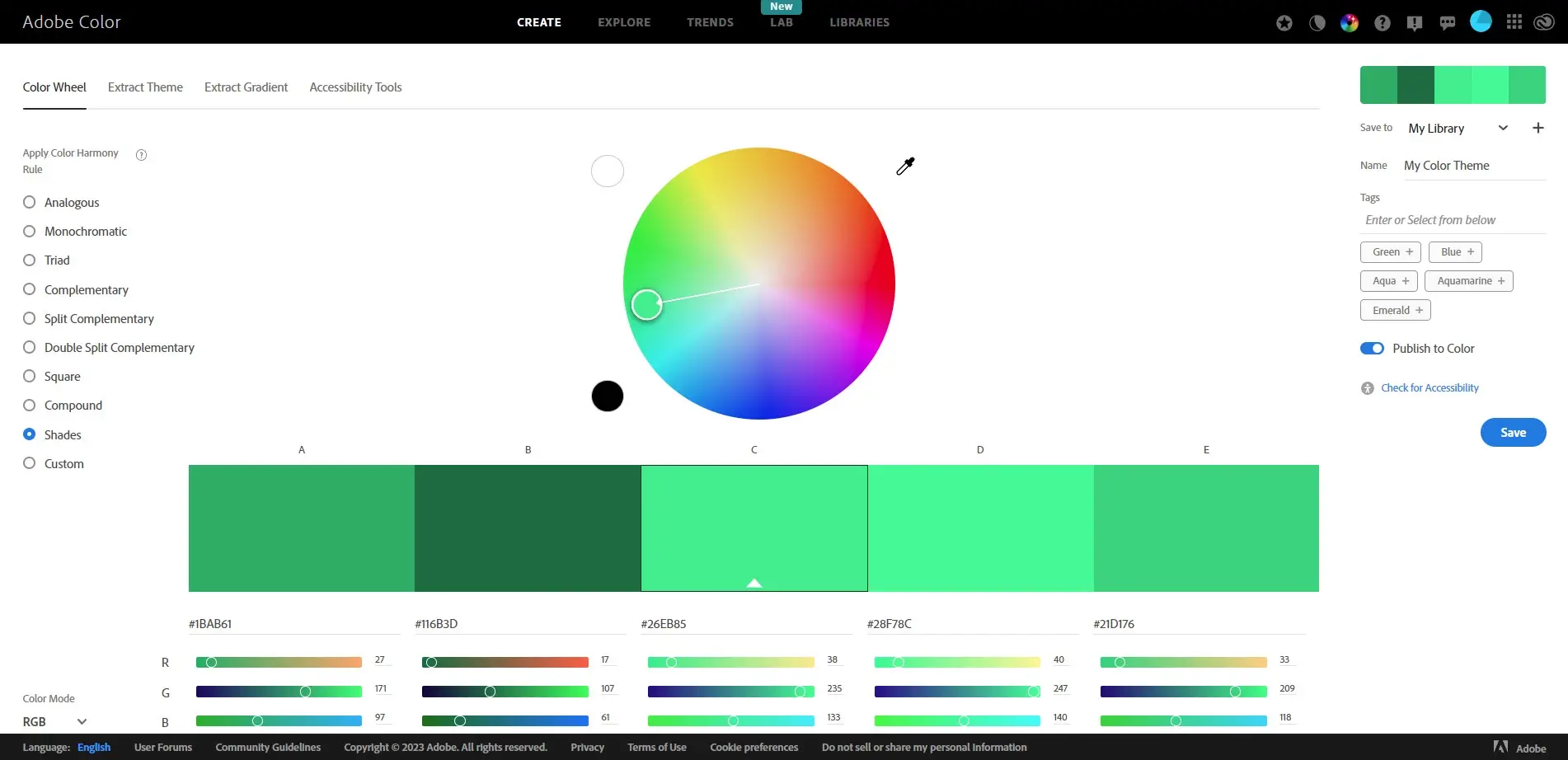
For information about color combinations for specific types of websites, see the articles Best Color for eCommerce Website, Website Color Palettes for Restaurants, and Best Color Combinations for Educational Websites.
Complementary Colors
Complementary colors are two colors that are from the opposite sides of the color wheel. They work well together. This includes the primary, secondary, and tertiary colors. The primary complementary colors are yellow and purple, green and red, and blue and orange.
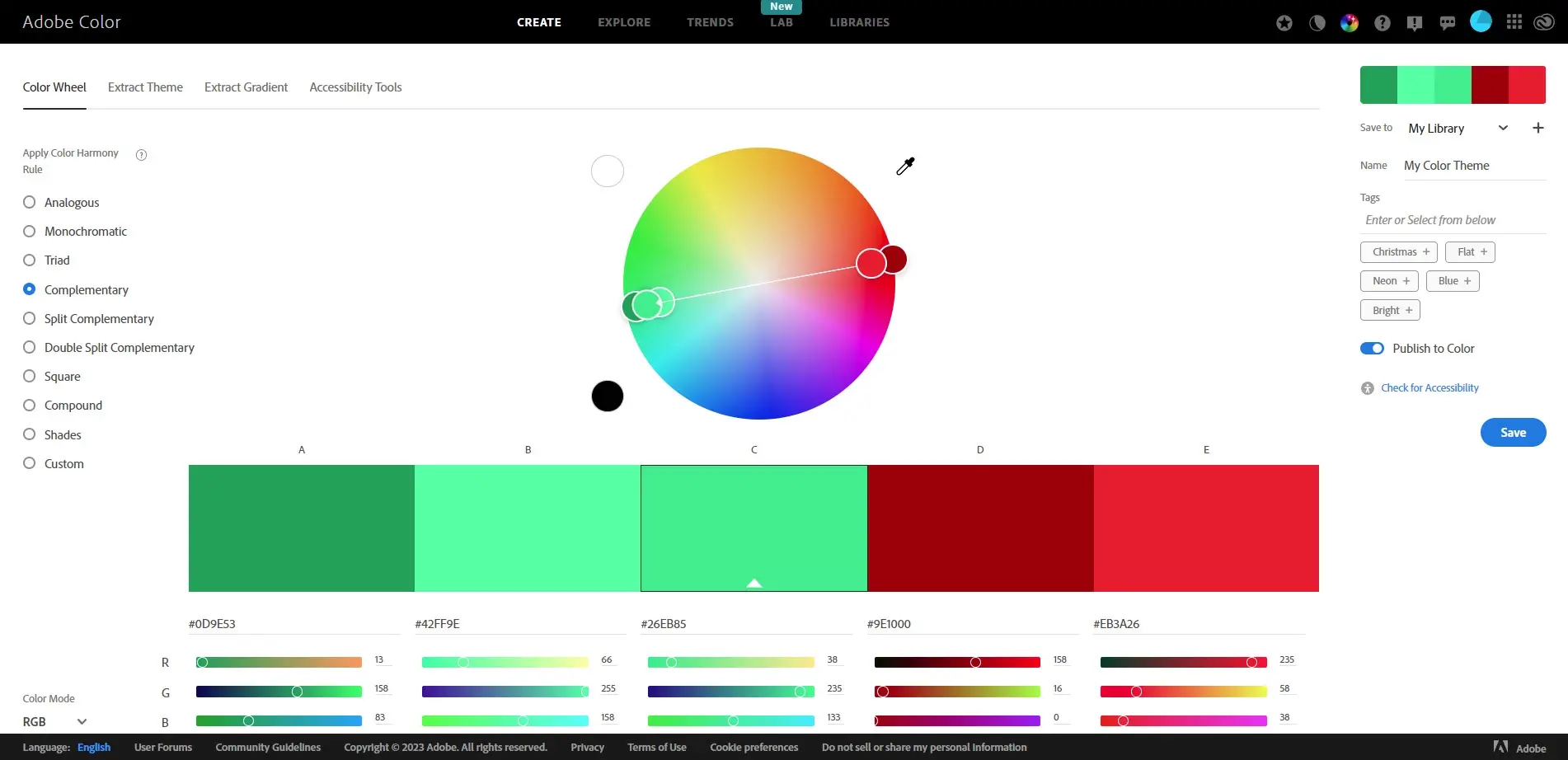
Triadic Colors
Triadic colors are the colors on three points of a triangle on the color wheel. There are two sets of primary triadic colors. The first set includes yellow, blue, and red. The second set includes green, purple, and orange. Triadic colors can also use secondary or tertiary colors on the color wheel.
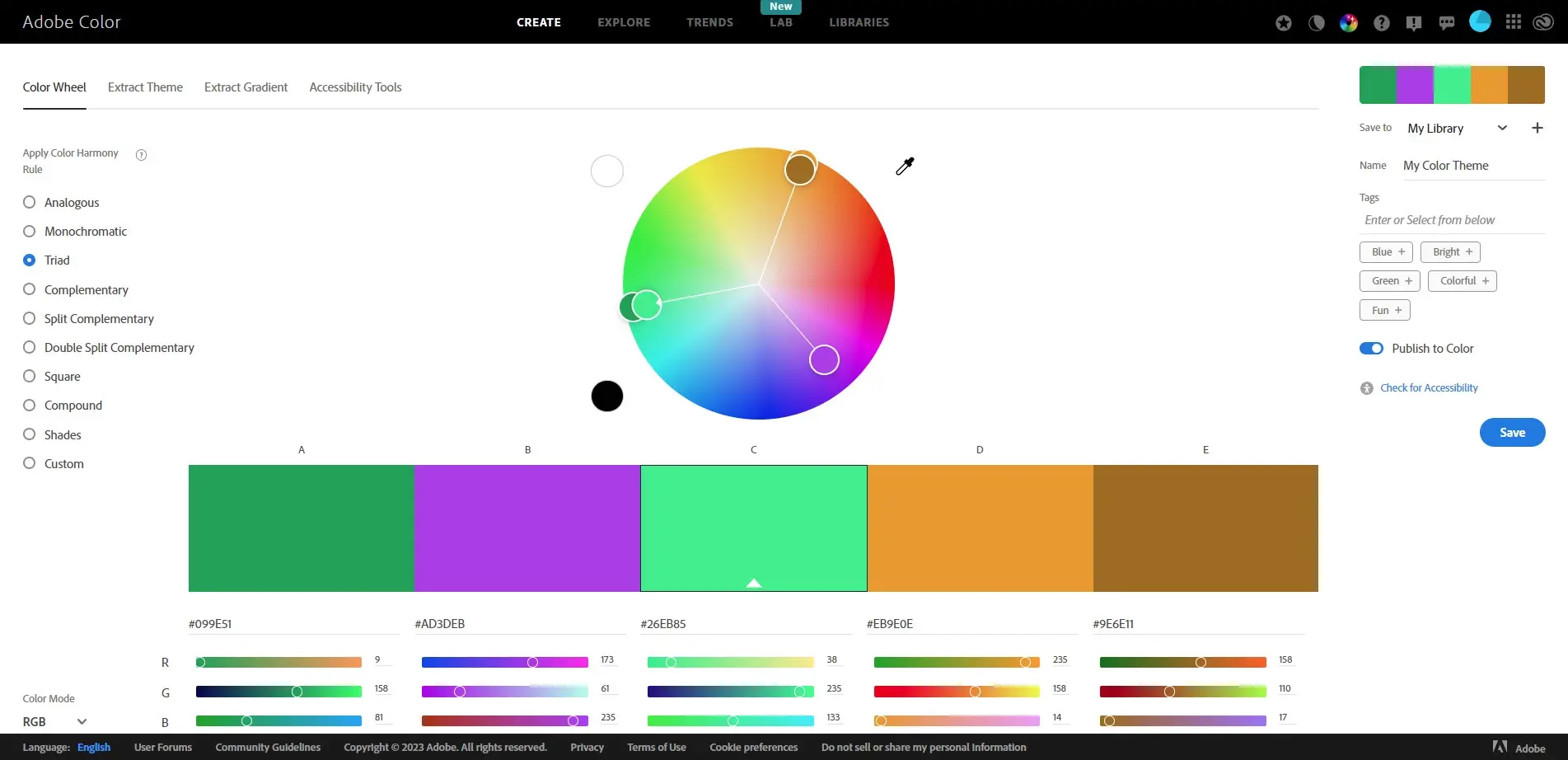
Analogous Colors
Analogous colors are three or more colors that are next to each other on the color wheel. This creates a combination of primary, secondary, and tertiary colors in the same or similar color.
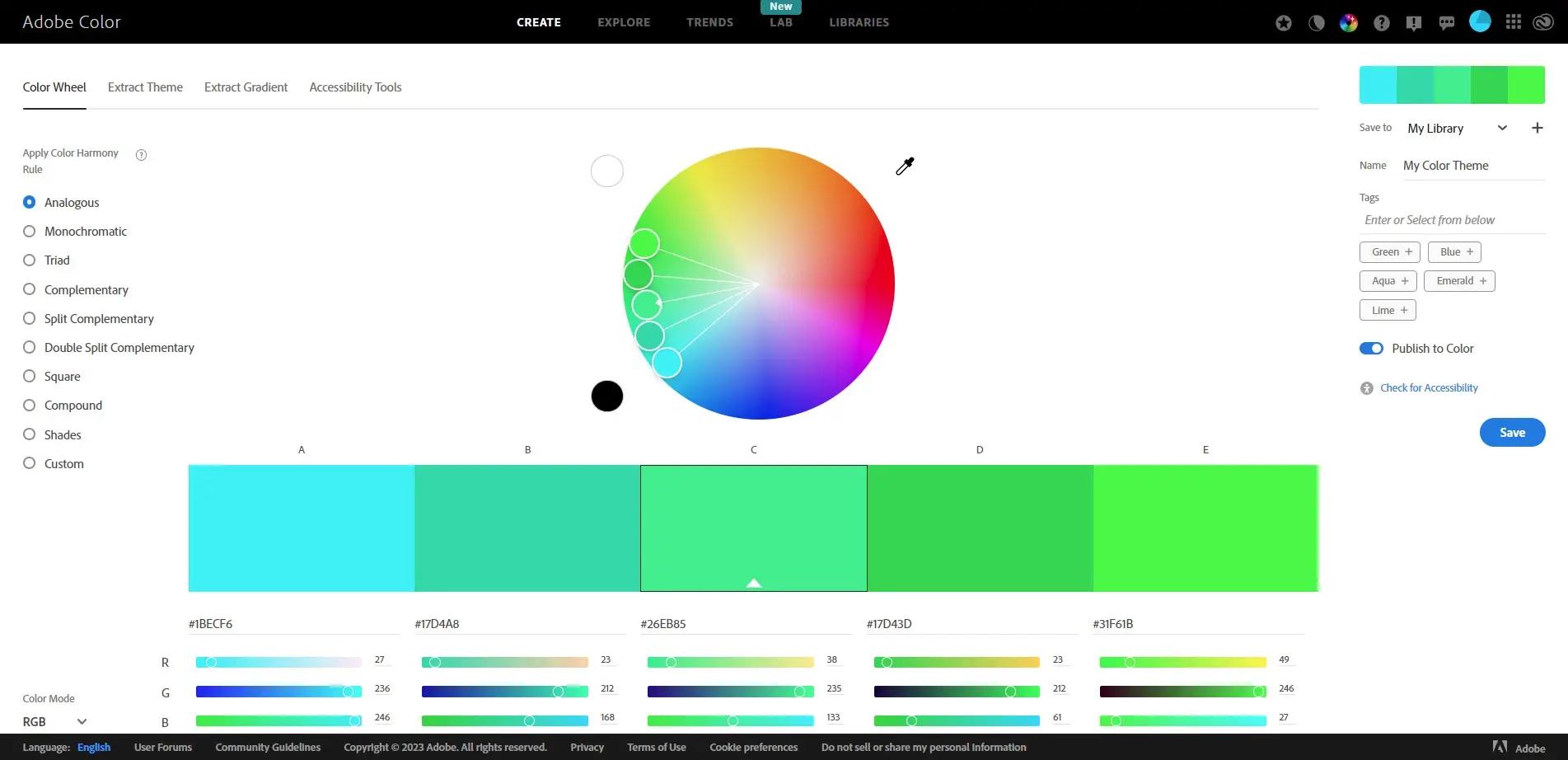
Hue, Tone, Tint, and Shade
- Hue is the pure color on the color wheel.
- Tone is the hue plus gray to reduce the saturation of the color.
- Adding white to any color creates a lighter tint of that color.
- Adding black creates a darker shade of that color.
Keep in mind that these variations will affect the mood of the color, so you’ll need to use them carefully and make changes as needed.
Warm vs. Cool Colors
Warm colors can portray happiness, passion, aggression, adventure, excitement, and danger. Cool colors can portray a relaxing mood, formality, safety, or sadness. Red, orange, yellow, and yellow/green are considered warm colors. Green, blue, purple, and red/purple are considered cool colors.
Neutral Colors
Black, white, and gray are neutral colors. They’re great for adding contrast, and balance, and grounding the color palette.
Contrast
Contrast is crucial. This is especially true between backgrounds and text. Low contrast is difficult to read because the colors blend. Too high of contrast can be hard on the eyes because of the harsh difference. Colors that don’t match can also be difficult to read because they conflict. Work on the balance of contrast until the colors are comfortable on the eyes.
Contrast also affects the hierarchy of your content. The more essential an element is, the more contrast it should have. For example, elements in a form that are less essential can have gray text, so they blend more, while the essential elements have more contrast and stand out.
Once you’ve decided on your colors, check them for accessibility using a tool such as Adobe Color Accessibility Tools. This provides a contrast ratio with a green check mark for a good contrast and shows a preview of the text and background with a pass or fail grade. It also provides suggestions. Import colors, save colors, make adjustments, and lots more.
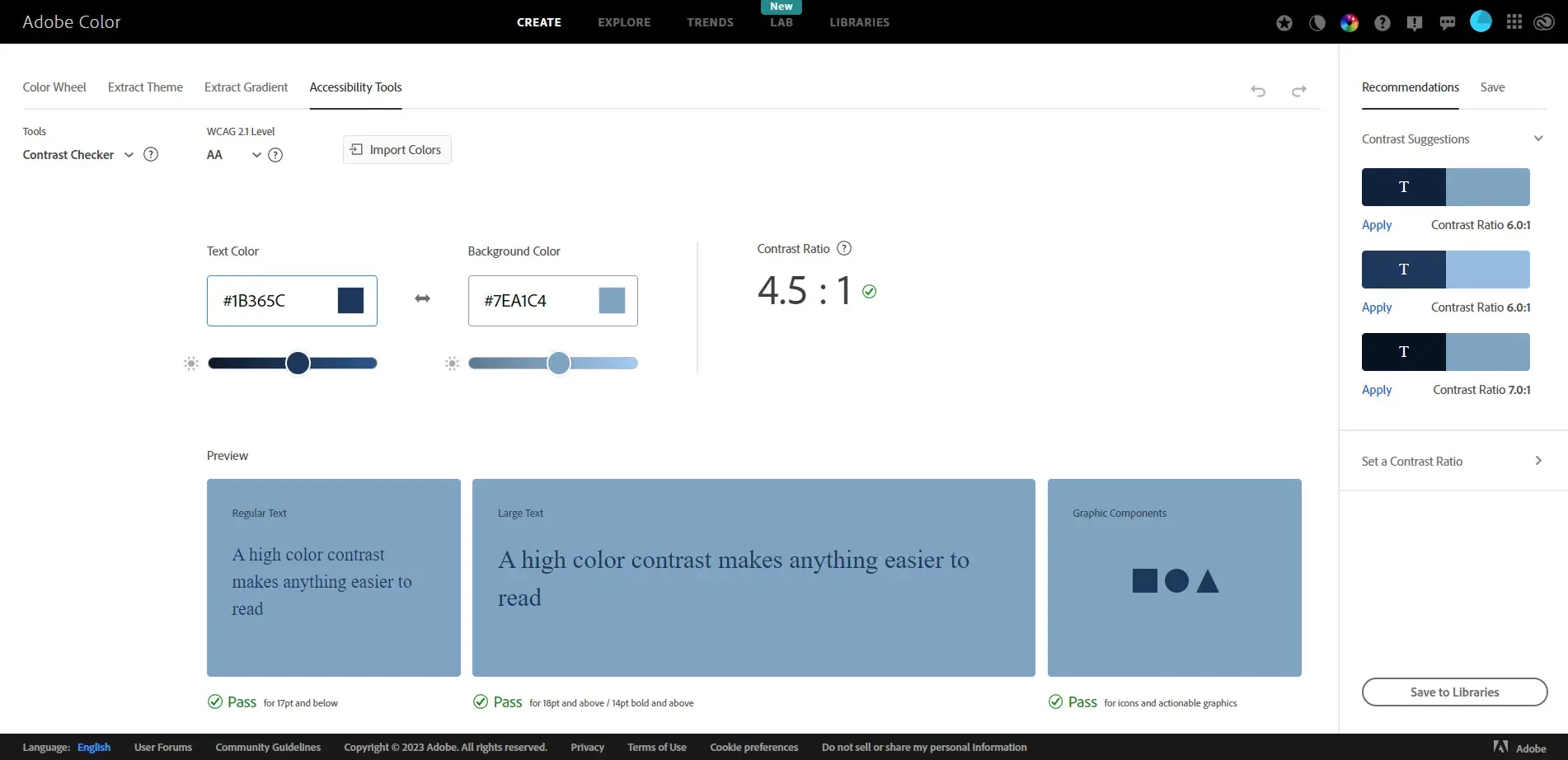
Monochrome
Monochrome are various shades, tints, etc., of a single color. Mono means one, and chrome comes from chroma, which means color. Monochrome can be used effectively if there’s enough contrast.
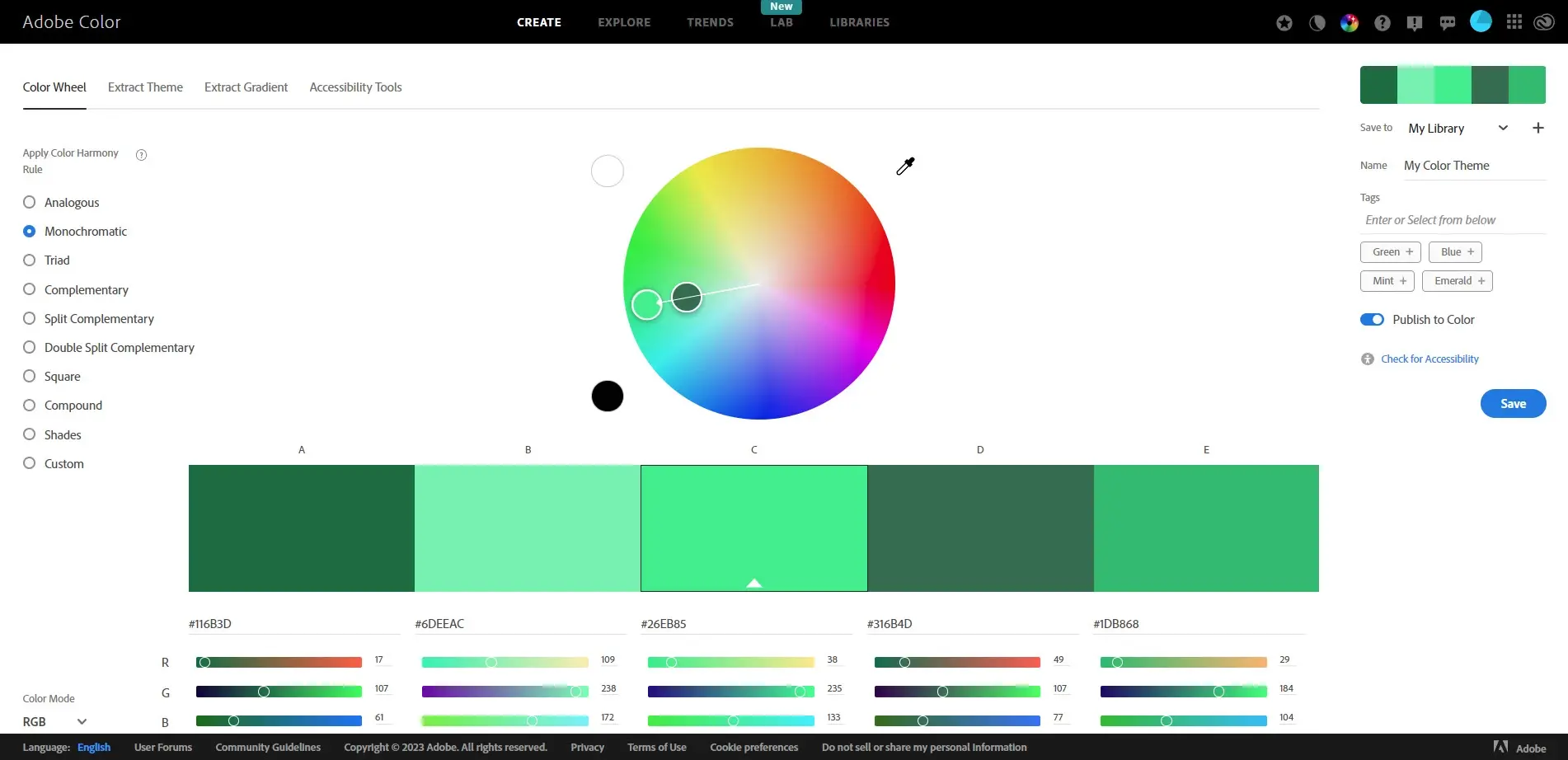
Colors and Their Moods
Now that we’ve seen how the color wheel works and how to build color palettes using tools such as Adobe Color, let’s discuss how to choose the right colors for your color palette.
As I’ve mentioned, colors spark certain moods. Let’s look at the colors on the spectrum a little closer and see the moods they spark. We’ll look at the colors as they appear on the Adobe color wheel.
Yellow
Yellow also sparks joy and happiness. It’s often used for cultivating inspiration and confidence. A lot of yellow can be difficult to see. It can also spark anxiety. It’s best when used sparingly. Yellow is good for highlights such as image borders, navigation backgrounds, button borders, etc.
Red
Red is energetic and makes a bold statement. It’s considered passionate and symbolizes love. Restaurants often use red to spark desire or hunger. It can also symbolize anger or danger. Red is a good choice if you want to draw attention, but you have to be careful not to draw the wrong type of attention. Use red in logos, for backgrounds, highlights, etc. It can be used for buttons, but you have to be careful that it doesn’t look like a warning.
Orange
Orange sparks happiness, joy, enthusiasm, and friendliness. It’s a warm color with feelings of adventure, creativity, and positivity. It’s great for backgrounds, navigation, calls-to-action, or anything you want to have a positive first impression.
Purple
Purple symbolizes luxury and wealth. It’s known as the royal color. Purple shows power and trust, and it’s relaxing. It’s an excellent color to combine with other colors, such as red or blue, to show energy. It can also look mystical. It’s great for backgrounds and buttons.
Blue
Blue is calm and energetic. It shows trust and reliability. It’s often used by small businesses and large corporations to help build confidence and credibility. Pale colors can look sad, so the shade of blue should be chosen carefully. Blue is a great choice for backgrounds.
Green
Green is relaxing and calm. It’s often used with nature and the environment. It’s often used with images of trees, mountains, fields, etc. Other uses of green include highlights, such as button and image borders, the background colors of buttons, and backgrounds behind the text.
Pink
Pink is a romantic color. It’s a shade of red, but it’s so popular that it deserves discussing it separately. Pink is associated with love and femininity. Bolder shades of pink can make a bold statement. Bold shades are great for typography against dark colors. Light shades are great for backgrounds for navigation, CTAs, and highlights. Light colors are best used for feminine websites, while bold colors are best for anything that wants to make a bold statement.
Black
Black is a neutral color and works well with just about any color. Even if the site is mostly black, it intensifies the other colors, so they stand out. Images can look even more elegant. It can mean different things in different cultures and can portray different moods depending on how it’s used. For example, black can symbolize death or strength, wisdom or mystery, seriousness, modernity, and more. It works well as a background to create contrast with light text.
White
White is also a neutral color and works with any color to create modern designs, minimalistic designs, and everything in between. It looks clean and gives all of the other elements breathing room. It’s excellent for creating a canvas to showcase all other colors on the page. White is ideal for background colors. Too much white space will make the site look empty and unfinished.
Using Color Theory for Website Design
A color palette built on good color theory principles will look great, be easy to see and use, give the website a balanced design, and catch the attention of your target audience. This will create a positive user experience that can grow your audience and increase your conversions.
Using color theory in your branding will create a lasting impression that stays with your audience. For example, we all know Barbie pink and Coca-Cola red. We usually think of those brands when we see those colors.
Although there are cases where clashing colors can be used on purpose, it’s generally not recommended. Clashing colors can create negative feelings and turn visitors away.
Keep in mind that using color is not a magic trick that automatically gets the audience to respond. Color psychology can be affected by age, culture, personal experiences, religion, gender, etc. Colors can even have the opposite meaning in different places in the world. Study your target audience carefully and utilize A/B testing to improve your use of color theory.
Ending Thoughts on Color Theory for Website Design
That’s our look at color theory for website design. Color theory is one of the most important, and often overlooked, concepts in website design. Color theory is powerful. Using the right colors and color combinations can spark joy, build credibility, strengthen brand recognition, and help grow a website. Using the wrong colors and combinations can spark distrust, create anxiety, and turn your visitors away.
Understanding how to use color theory to your advantage is one of the most important concepts every web designer should know. Fortunately, choosing the right colors and combinations is not a mystery. Using the concepts and tools we’ve covered in this article will help you choose the perfect colors for your next website.
We want to hear from you. Do you use color theory in your website designs? Let us know about your experience in the comments.
Frequently Asked Questions
How do I choose a design for my website?
One of the most important things when creating a website for your art is the design. Even though your pieces of art might be amazing, people will leave if your site is hard to navigate. This is why it’s important that the site is easy on the eyes and easy to navigate.
Is a website on WordPress safe?
Websites on WordPress are safe, however to avoid hacking keep your website up to date.
How is the website maintenance carried out?
On a daily basis, software, hardware, vulnerability, MariaDB, CloudLinux paths and cPanel updates are carried out on our servers without a reboot. However, if we have to carry out any maintenance that includes some downtime, we schedule in advance and update our status page
Can a website have more than one domain?
Yes, a website can have multiple domains through domain aliasing or forwarding, allowing it to be accessed using different domain names while representing the same website. This is beneficial for businesses aiming to strengthen branding, target specific regions or audiences, and utilize subdomains for organizing different sections or functionalities.

Randy A. Brown is a freelance writer from east TN specializing in WordPress and eCommerce. He's a longtime WordPress enthusiast and loves learning new things and sharing information with others. If he's not writing or reading, he's probably playing guitar.
View all posts by Randy A. Brown















